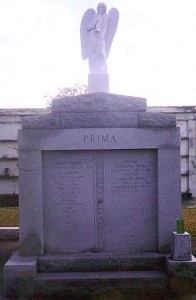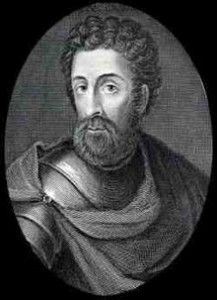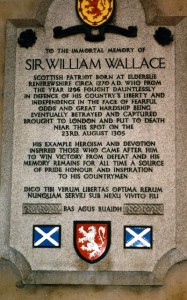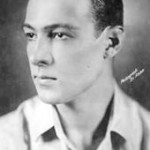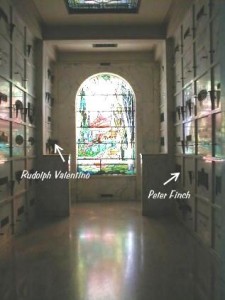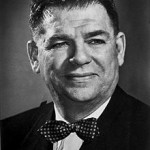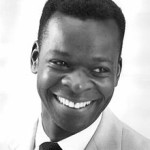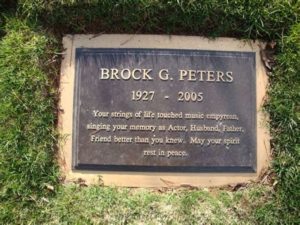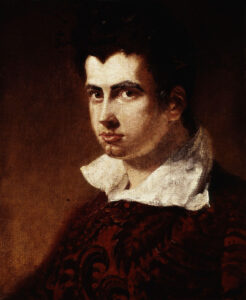 On this day in 1859 critic, essayist, friend of Keats and Shelley, poet (“Jenny kiss’d Me”, “Abou Ben Adhem”, “A Night-Rain in Summer”), Leigh Hunt died in Putney in London, aged 74. Born James Henry Leigh Hunt on 19 October 1784, in Southgate, London.
On this day in 1859 critic, essayist, friend of Keats and Shelley, poet (“Jenny kiss’d Me”, “Abou Ben Adhem”, “A Night-Rain in Summer”), Leigh Hunt died in Putney in London, aged 74. Born James Henry Leigh Hunt on 19 October 1784, in Southgate, London.
Hunt co-founded The Examiner, a leading intellectual journal expounding radical principles. He was the centre of the Hampstead-based group that included William Hazlitt and Charles Lamb, known as the “Hunt circle”. Hunt also introduced John Keats, Percy Bysshe Shelley, Robert Browning and Alfred Tennyson to the public.
Hunt’s presence at Shelley’s funeral on the beach near Viareggio was immortalised in the painting by Louis Édouard Fournier, although in reality Hunt did not stand by the pyre, as portrayed. Hunt inspired aspects of the Harold Skimpole character in Charles Dickens’ novel Bleak House
Hunt maintained close friendships with both Keats and Shelley. Financial help from Shelley saved Hunt from ruin. In return, Hunt provided Shelley with support during his family problems and defended him in The Examiner. Hunt introduced Keats to Shelley and wrote a very generous appreciation of him in The Indicator. Keats seemingly, however, later felt that Hunt’s example as a poet had been in some respects detrimental to him.
After Shelley’s departure for Italy in 1818, Hunt experienced more financial difficulties. In addition, both his health and that of his wife Marianne failed. As a result, Hunt was forced to discontinue The Indicator (1819–1821) and stated that he had “almost died over the last numbers”.
In 1809, Leigh Hunt married Marianne Kent. Over the next 20 years, the couple had ten children. Marianne, in poor health for most of her life, died on 26 January 1857, at the age of 69.
 The Final Footprint – Hunt was interred at Kensal Green Cemetery. In September 1966, Christ’s Hospital named one of its houses in the memory of Hunt. Today, a residential street in his birthplace of Southgate is named Leigh Hunt Drive in his honour. His epitaph:
The Final Footprint – Hunt was interred at Kensal Green Cemetery. In September 1966, Christ’s Hospital named one of its houses in the memory of Hunt. Today, a residential street in his birthplace of Southgate is named Leigh Hunt Drive in his honour. His epitaph:
“WRITE ME AS ONE
THAT LOVES HIS FELLOW MEN.”
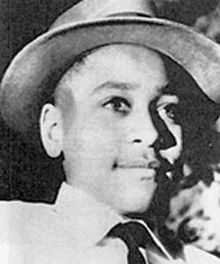 On this day in 1955 “Bobo”, Emmett Till was murdered near Money, Mississippi at the age of 14. Born Emmett Louis Till on 25 July 1941 in Chicago.
On this day in 1955 “Bobo”, Emmett Till was murdered near Money, Mississippi at the age of 14. Born Emmett Louis Till on 25 July 1941 in Chicago.
Till was lynched after being accused of offending a white woman in her family’s grocery store. The brutality of his murder and the fact that his killers were acquitted drew attention to the long history of violent persecution of African Americans in the United States. Till posthumously became an icon of the civil rights movement.
During summer vacation in August 1955, he was visiting relatives near Money, in the Mississippi Delta region. He spoke to 21-year-old Carolyn Bryant, the white married proprietor of a small grocery store there. Although what happened at the store is a matter of dispute, Till was accused of flirting with or whistling at Bryant. In 1955, Bryant had testified that Till made physical and verbal advances. The jury did not hear Bryant’s testimony, due to the judge ruling it inadmissible. Decades later, historian Timothy Tyson interviewed Bryant and wrote a book in which he claimed that she had disclosed that she had fabricated part of the testimony regarding her interaction with Till, specifically the portion where she accused Till of grabbing her waist and uttering obscenities; “That part’s not true,” Tyson claimed that Bryant stated in a 2008 interview with him. Till’s interaction with Bryant, perhaps unwittingly if at all, violated the strictures of conduct for an African-American male interacting with a white woman in the Jim Crow-era South. Several nights after the incident in the store, Bryant’s husband Roy and his half-brother J.W. Milam were armed when they went to Till’s great-uncle’s house and abducted the boy. They took him away and beat and mutilated him before shooting him in the head and sinking his body in the Tallahatchie River. Three days later, Till’s body was discovered and retrieved from the river.
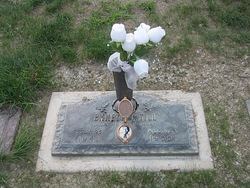 The Final Footprint – Till is interred in Burr Oak Cemetery in Alsip, Illinois. His grave is marked by an individual flat bronze on concrete marker with a cameo photo. His mother, Mamie Carthan, insisted on a public funeral service with an open casket to show the world the brutality of the killing. Tens of thousands attended his funeral or viewed his open casket. Images of his mutilated body were published in black magazines and newspapers, rallying popular black support and white sympathy across the U.S.
The Final Footprint – Till is interred in Burr Oak Cemetery in Alsip, Illinois. His grave is marked by an individual flat bronze on concrete marker with a cameo photo. His mother, Mamie Carthan, insisted on a public funeral service with an open casket to show the world the brutality of the killing. Tens of thousands attended his funeral or viewed his open casket. Images of his mutilated body were published in black magazines and newspapers, rallying popular black support and white sympathy across the U.S.
Although local newspapers and law enforcement officials initially decried the violence against Till and called for justice, they responded to national criticism by defending Mississippians, temporarily giving support to the killers. In September 1955, an all-white jury found Bryant and Milam not guilty of Till’s kidnapping and murder. Protected against double jeopardy, the two men publicly admitted in a 1956 interview with Look magazine that they had killed Till.
Till’s murder was seen as a catalyst for the next phase of the civil rights movement. In December 1955, the Montgomery bus boycott began in Alabama and lasted more than a year, resulting eventually in a U.S. Supreme Court ruling that segregated buses were unconstitutional. According to historians, events surrounding Till’s life and death continue to resonate. Some writers have suggested that almost every story about Mississippi returns to Till, or the Delta region in which he died.
An Emmett Till Memorial Commission was established in the early 21st century. The Sumner County Courthouse was restored and includes the Emmett Till Interpretive Center. Fifty-one sites in the Mississippi Delta are memorialized as associated with Till. A statue was unveiled in Denver in 1976 (since moved to Pueblo, Colorado) featuring Till with Martin Luther King, Jr. Till was included among the forty names of people who had died in the Civil Rights Movement (listed as martyrs) on the granite sculpture of the Civil Rights Memorial in Montgomery, Alabama, dedicated in 1989.
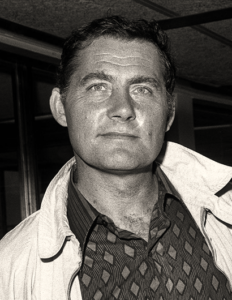 On this day in 1978 actor (A Man for All Seasons, The Sting, Quint in Jaws, From Russia with Love), novelist (The Sun Doctor), playwright and screenwriter Robert Shaw died from a heart attack on 28 August 1978, while driving from Castlebar, County Mayo, Ireland to his home in Tourmakeady, aged 51. Born Robert Archibald Shaw on 9 August 1927 at 51 King Street in Westhoughton, Lancashire, England.
On this day in 1978 actor (A Man for All Seasons, The Sting, Quint in Jaws, From Russia with Love), novelist (The Sun Doctor), playwright and screenwriter Robert Shaw died from a heart attack on 28 August 1978, while driving from Castlebar, County Mayo, Ireland to his home in Tourmakeady, aged 51. Born Robert Archibald Shaw on 9 August 1927 at 51 King Street in Westhoughton, Lancashire, England.
Beginning his career in theatre, Shaw joined the Shakespeare Memorial Theatre after the Second World War and appeared in productions of Macbeth, Henry VIII, Cymbeline, and other Shakespeare plays. With the Old Vic company (1951–52), he continued primarily in Shakespearean roles. In 1959 he starred in a West End production of The Long and the Short and the Tall. Shaw was nominated for an Academy Award and a Golden Globe for his role as Henry VIII in A Man for All Seasons (1966).
Shaw was married three times and had 10 children, two of whom were adopted. His first wife was Jennifer Bourke from 1952 to 1963, with whom he had four daughters. His second wife was actress Mary Ure from 1963 to 1975, with whom he had four children. This marriage ended with Ure’s death from an overdose. His third and final wife was Virginia Jansen from 1976 until his death in 1978, with whom he had one son
For the last seven years of his life, Shaw lived at Drimbawn House in Tourmakeady, County Mayo, Ireland. Like his father, Shaw was an alcoholic for most of his life.
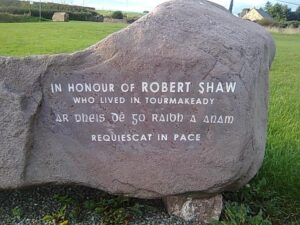
 The Final Footprint – While driving from Castlebar, County Mayo, to his
The Final Footprint – While driving from Castlebar, County Mayo, to his  home in Tourmakeady, Shaw suddenly became ill, stopped the car, stepped out, and then collapsed and died on the roadside. He was accompanied by his wife Virginia and his son Thomas at the time. He was rushed to Castlebar General Hospital, where he was pronounced dead. He had just completed acting in the film Avalanche Express. His body was cremated and his ashes scattered near his home in Tourmakeady. A stone memorial to him was unveiled there in his honour in August 2008.
home in Tourmakeady, Shaw suddenly became ill, stopped the car, stepped out, and then collapsed and died on the roadside. He was accompanied by his wife Virginia and his son Thomas at the time. He was rushed to Castlebar General Hospital, where he was pronounced dead. He had just completed acting in the film Avalanche Express. His body was cremated and his ashes scattered near his home in Tourmakeady. A stone memorial to him was unveiled there in his honour in August 2008.
 On this day in 1985 actress, (Rosemary’s Baby, What Ever Happened to Aunt Alice, Where’s Poppa?, Harold and Maude, Every Which Way but Loose), screenwriter and playwright Ruth Gordon died at her summer home in Edgartown, Massachusetts, following a stroke at age 88. Born Ruth Gordon Jones in Quincy, Massachusetts, at 41 Winthrop Avenue.
On this day in 1985 actress, (Rosemary’s Baby, What Ever Happened to Aunt Alice, Where’s Poppa?, Harold and Maude, Every Which Way but Loose), screenwriter and playwright Ruth Gordon died at her summer home in Edgartown, Massachusetts, following a stroke at age 88. Born Ruth Gordon Jones in Quincy, Massachusetts, at 41 Winthrop Avenue.
She began her career performing on Broadway at age 19. Known for her nasal voice and distinctive personality, Gordon gained international recognition and critical acclaim for film roles that continued into her 70s and 80s. In addition to her acting career, Gordon wrote numerous plays, film scripts, and books, most notably co-writing the screenplay for the 1949 film Adam’s Rib. Gordon won an Academy Award, a Primetime Emmy, and two Golden Globe Awards for her acting, as well as three Academy Award nominations for her writing.
The Final Footprint – Her husband for 43 years, Garson Kanin, was at her side and said that even her last day of life was typically full, with walks, talks, errands, and a morning of work on a new play. She had made her last public appearance two weeks before, at a benefit showing of the film Harold and Maude, and had recently finished acting in four films.
In August 1979, a small movie theater in Westboro, Massachusetts, was named the Ruth Gordon Flick. She attended the opening ceremony, standing on a bench in the lobby so she could be seen. The theater no longer exists. In November 1984, the outdoor amphitheater in Merrymount Park in Quincy, Massachusetts, was named Ruth Gordon Amphitheater in her honor. Gordon was cremated.
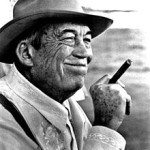 On this day in 1987, film director, screenwriter and actor, John Huston, died in Middletown, Rhode Island from pneumonia as a complication of lung disease in his rented home at the age of 81. Born John Marcellus Huston on 5 August 1906, in Nevada, Missouri. He wrote the screenplays for most of the 37 feature films he directed, many of which are today considered classics: The Maltese Falcon (1941), The Treasure of the Sierra Madre (1948), Key Largo (1948), The Asphalt Jungle (1950), The African Queen (1951), Moulin Rouge (1952), The Misfits (1961), and The Man Who Would Be King (1975). During his 46-year career, Huston received 15 Oscar nominations, won twice, and directed both his father, Walter Huston, and daughter, Anjelica Huston, to Oscar wins in different films. Huston was known to direct with the vision of an artist, having studied and worked as a fine art painter in Paris in his early years. He continued to explore the visual aspects of his films throughout his career: sketching each scene on paper beforehand, then carefully framing his characters during the shooting. In addition, while most directors rely on post-production editing to shape their final work, Huston instead created his films while they were being shot, making his films both more economical and more cerebral, with little editing needed. Before becoming a Hollywood filmmaker, he had been an amateur boxer, reporter, short-story writer, portrait artist in Paris, a cavalry rider in Mexico, and a documentary filmmaker during World War II. Huston has been referred to as “a titan”, “a rebel” and a “renaissance man”, in the Hollywood film industry and one who was never afraid to tackle tough issues head on. Besides sports and adventure, Huston enjoyed hard liquor and relationships with women of all types — one of the reasons he was married five times; Dorothy Harvey (1925–1926; divorce), Lesley Black (1937–1945; divorce), actress Evelyn Keyes (Suellen O’Hara in Gone with the Wind) (1946–1950; divorce), Enrica Soma (mother of Anjelica) (1950–1969; her death), and Celeste Shane (1972–1977; divorce).
On this day in 1987, film director, screenwriter and actor, John Huston, died in Middletown, Rhode Island from pneumonia as a complication of lung disease in his rented home at the age of 81. Born John Marcellus Huston on 5 August 1906, in Nevada, Missouri. He wrote the screenplays for most of the 37 feature films he directed, many of which are today considered classics: The Maltese Falcon (1941), The Treasure of the Sierra Madre (1948), Key Largo (1948), The Asphalt Jungle (1950), The African Queen (1951), Moulin Rouge (1952), The Misfits (1961), and The Man Who Would Be King (1975). During his 46-year career, Huston received 15 Oscar nominations, won twice, and directed both his father, Walter Huston, and daughter, Anjelica Huston, to Oscar wins in different films. Huston was known to direct with the vision of an artist, having studied and worked as a fine art painter in Paris in his early years. He continued to explore the visual aspects of his films throughout his career: sketching each scene on paper beforehand, then carefully framing his characters during the shooting. In addition, while most directors rely on post-production editing to shape their final work, Huston instead created his films while they were being shot, making his films both more economical and more cerebral, with little editing needed. Before becoming a Hollywood filmmaker, he had been an amateur boxer, reporter, short-story writer, portrait artist in Paris, a cavalry rider in Mexico, and a documentary filmmaker during World War II. Huston has been referred to as “a titan”, “a rebel” and a “renaissance man”, in the Hollywood film industry and one who was never afraid to tackle tough issues head on. Besides sports and adventure, Huston enjoyed hard liquor and relationships with women of all types — one of the reasons he was married five times; Dorothy Harvey (1925–1926; divorce), Lesley Black (1937–1945; divorce), actress Evelyn Keyes (Suellen O’Hara in Gone with the Wind) (1946–1950; divorce), Enrica Soma (mother of Anjelica) (1950–1969; her death), and Celeste Shane (1972–1977; divorce).
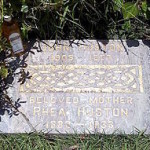 The Final Footprint – Huston is interred next to his mother in the Hollywood Forever Cemetery in Hollywood. Other notable Final Footprints at Hollywood Forever include; Mel Blanc (yes, his epitaph is “That’s All Folks!”), Lana Clarkson, Iron Eyes Cody, Chris Cornell, Dick Dale, Cecil B. DeMille, Victor Fleming, Judy Garland, Joan Hackett, Hattie McDaniel’s cenotaph, Jayne Mansfield’s cenotaph, Tyrone Power, Dee Dee Ramone, Johnny Ramone, Virginia Rappe, Nelson Riddle, Mickey Rooney, Ann Sheridan, Bugsy Siegel, Rudolph Valentino, Fay Wray, and Anton Yelchin.
The Final Footprint – Huston is interred next to his mother in the Hollywood Forever Cemetery in Hollywood. Other notable Final Footprints at Hollywood Forever include; Mel Blanc (yes, his epitaph is “That’s All Folks!”), Lana Clarkson, Iron Eyes Cody, Chris Cornell, Dick Dale, Cecil B. DeMille, Victor Fleming, Judy Garland, Joan Hackett, Hattie McDaniel’s cenotaph, Jayne Mansfield’s cenotaph, Tyrone Power, Dee Dee Ramone, Johnny Ramone, Virginia Rappe, Nelson Riddle, Mickey Rooney, Ann Sheridan, Bugsy Siegel, Rudolph Valentino, Fay Wray, and Anton Yelchin.
#RIP #OTD in 2017 model and actress (Week-end, Le Grand Blond avec une chaussure noire, Madly, Les seins de glace, L’Homme pressé) Mireille Darc died in Paris at the age of 79. Cimetière du Montparnasse, Paris
And on this day in 2020 actor (42, Get on Up, Black Panther, Ma Rainey’s Black Bottom) and playwright (Deep Azure) Chadwick Boseman died at his Los Angeles home as a result of complications related to colon cancer, age 43. Born Chadwick Aaron Boseman in Anderson, South Carolina on 29 November 1976. Boseman received two Screen Actors Guild Awards, a Golden Globe Award, and a Critics’ Choice Movie Award, among other accolades. He was also posthumously nominated for an Academy Award and a Primetime Emmy Award.
After studying directing at Howard University, Boseman began his career in theatre, winning a Drama League Directing Fellowship and an acting AUDELCO, along with receiving a Jeff Award nomination for his 2005 play Deep Azure. Transitioning to the screen, his first major role was as a series regular on the NBC drama Persons Unknown (2010) and he landed his breakthrough performance as baseball player Jackie Robinson in the 2013 biographical film 42. He continued to portray historical figures, starring as singer James Brown in Get on Up (2014) and as attorney Thurgood Marshall in Marshall (2017).
Boseman achieved international fame for playing the Marvel Comics superhero Black Panther in the Marvel Cinematic Universe (MCU) from 2016 to 2019. He appeared in four MCU films, including an eponymous 2018 film that earned him an NAACP Image Award for Outstanding Actor in a Motion Picture and a Screen Actors Guild Award for Outstanding Performance by a Cast in a Motion Picture. As the first black actor to headline an MCU film, he was also named in the 2018 Time 100. Boseman’s final performance as the character in the Disney + anthology series What If…? (2021) earned him a posthumous Primetime Emmy nomination for Outstanding Character Voice-Over Performance.
Boseman began dating singer Taylor Simone Ledward in 2015. The two reportedly got engaged by October 2019, and they later married in secret
 The Final Footprint – A public memorial service was held on September 4, 2020, in Anderson, South Carolina, where the speakers included Boseman’s childhood pastor as well as Deanna Brown-Thomas, daughter of James Brown, whom Boseman portrayed in Get on Up. The city announced plans for the creation of a permanent art memorial at the service. Boseman’s final resting place is Forest Lawn Memorial Cemetery in Anderson.
The Final Footprint – A public memorial service was held on September 4, 2020, in Anderson, South Carolina, where the speakers included Boseman’s childhood pastor as well as Deanna Brown-Thomas, daughter of James Brown, whom Boseman portrayed in Get on Up. The city announced plans for the creation of a permanent art memorial at the service. Boseman’s final resting place is Forest Lawn Memorial Cemetery in Anderson.
Have you planned yours yet?
Follow TFF on twitter @RIPTFF
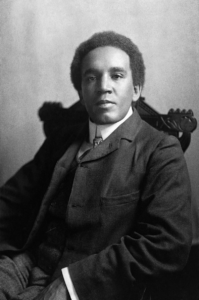 On this day in 1912 composer Samuel Coleridge-Taylor died from pneumonia in Holborn, London at the age of 37. Born on 15 August 1875 in Croydon, Surrey, England. Coleridge-Taylor achieved such success that he was referred to by white New York musicians as the “African Mahler” at the time when he had three tours of the United States in the early 1900s. He was particularly known for his three cantatas based on the epic poem, Song of Hiawatha by American Henry Wadsworth Longfellow. Coleridge-Taylor premiered the first section in 1898, when he was 22.
On this day in 1912 composer Samuel Coleridge-Taylor died from pneumonia in Holborn, London at the age of 37. Born on 15 August 1875 in Croydon, Surrey, England. Coleridge-Taylor achieved such success that he was referred to by white New York musicians as the “African Mahler” at the time when he had three tours of the United States in the early 1900s. He was particularly known for his three cantatas based on the epic poem, Song of Hiawatha by American Henry Wadsworth Longfellow. Coleridge-Taylor premiered the first section in 1898, when he was 22.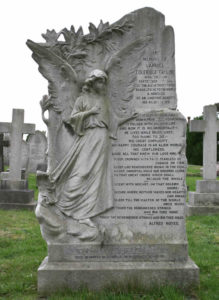 The Final Footprint
The Final Footprint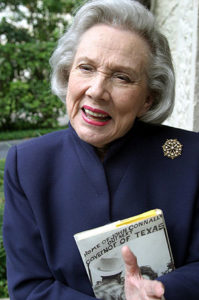 On this day in 2006, aspiring actress, graduate of the University of Texas, former First Lady of Texas, author and last survivor of the Lincoln limousine that carried President John F. Kennedy, Nellie Connally died peacefully at her home in Austin, Texas at the age of 87. Born Idanell Brill in Austin on 24 February 1919. She auditioned for the roll of Scarlett O’Hara.
On this day in 2006, aspiring actress, graduate of the University of Texas, former First Lady of Texas, author and last survivor of the Lincoln limousine that carried President John F. Kennedy, Nellie Connally died peacefully at her home in Austin, Texas at the age of 87. Born Idanell Brill in Austin on 24 February 1919. She auditioned for the roll of Scarlett O’Hara.
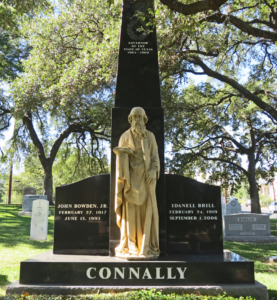 The Final Footprint – The Connally’s are buried together at the Texas State Cemetery in Austin. Texans widely regard her as a beloved daughter of the great state of Texas. Other notable final footprints at Texas State Cemetery include; Stephen F. Austin, J. Frank Dobie, Barbara Jordan, Tom Landry (cenotaph), James A. Michener (cenotaph), Ann Richards, Edwin “Bud” Shrake, Big Foot Wallace, and Walter Prescott Webb. What are your thoughts on the conspiracy theories surrounding JFK’s assassination?
The Final Footprint – The Connally’s are buried together at the Texas State Cemetery in Austin. Texans widely regard her as a beloved daughter of the great state of Texas. Other notable final footprints at Texas State Cemetery include; Stephen F. Austin, J. Frank Dobie, Barbara Jordan, Tom Landry (cenotaph), James A. Michener (cenotaph), Ann Richards, Edwin “Bud” Shrake, Big Foot Wallace, and Walter Prescott Webb. What are your thoughts on the conspiracy theories surrounding JFK’s assassination?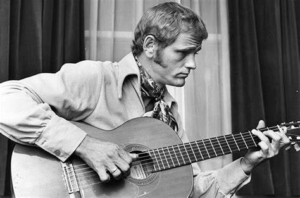 On this day in 2008 singer, guitarist, songwriter and actor Jerry Reed died in Nashville, Tennessee of complications from emphysema, at the age of 71. Born Jerry Reed Hubbard on 20 March 1937 in Atlanta, Georgia. His signature songs include “Guitar Man,” “U.S. Male”, “A Thing Called Love,” “Alabama Wild Man,” “Amos Moses”, “When You’re Hot, You’re Hot” (which garnered a Grammy Award for Best Male Country Vocal Performance), “Ko-Ko Joe”, “Lord, Mr. Ford”, “East Bound and Down” (the theme song for the 1977 blockbuster Smokey and the Bandit, in which Reed co-starred along with Jackie Gleason, Burt Reynolds and Sally Field), “The Bird,” and “She Got the Goldmine (I Got the Shaft)”. Reed was married to Priscilla Mitchell (1959 – 2008 his death).
On this day in 2008 singer, guitarist, songwriter and actor Jerry Reed died in Nashville, Tennessee of complications from emphysema, at the age of 71. Born Jerry Reed Hubbard on 20 March 1937 in Atlanta, Georgia. His signature songs include “Guitar Man,” “U.S. Male”, “A Thing Called Love,” “Alabama Wild Man,” “Amos Moses”, “When You’re Hot, You’re Hot” (which garnered a Grammy Award for Best Male Country Vocal Performance), “Ko-Ko Joe”, “Lord, Mr. Ford”, “East Bound and Down” (the theme song for the 1977 blockbuster Smokey and the Bandit, in which Reed co-starred along with Jackie Gleason, Burt Reynolds and Sally Field), “The Bird,” and “She Got the Goldmine (I Got the Shaft)”. Reed was married to Priscilla Mitchell (1959 – 2008 his death).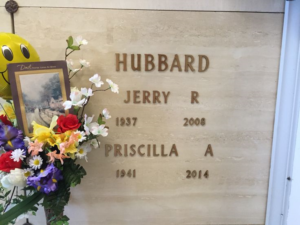 The Final Footprint – Reed is entombed in the Cross Mausoleum in Woodlawn Memorial Park in Nashville. Other notable Final Footprints at Woodlawn include; Eddy Arnold, Little Jimmy Dickens, George Jones, Johnny Paycheck, Webb Pierce, Marty Robbins, Dan Seals, Red Sovine, Porter Wagoner, and Tammy Wynette.
The Final Footprint – Reed is entombed in the Cross Mausoleum in Woodlawn Memorial Park in Nashville. Other notable Final Footprints at Woodlawn include; Eddy Arnold, Little Jimmy Dickens, George Jones, Johnny Paycheck, Webb Pierce, Marty Robbins, Dan Seals, Red Sovine, Porter Wagoner, and Tammy Wynette.

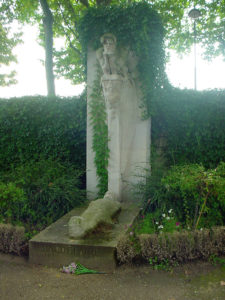
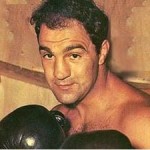
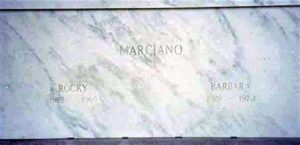
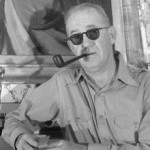
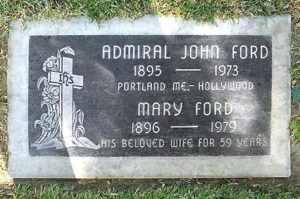

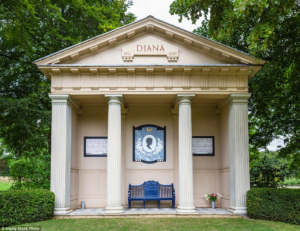
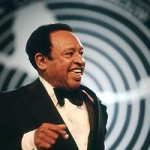 On this day in 2002 jazz vibraphonist, pianist, percussionist, bandleader and actor, Gates, Hamp, Mad Lionel, Lionel Hampton died from congestive heart failure at Mount Sinai Hospital in New York City, at the age of 94. Born Lionel Leo Hampton on 20 April 1908 in Louisville, Kentucky. Hampton was one of the first jazz vibraphone players and ranks among the great names in jazz history. Hampton married Gladys Riddle (1936-1971 her death).
On this day in 2002 jazz vibraphonist, pianist, percussionist, bandleader and actor, Gates, Hamp, Mad Lionel, Lionel Hampton died from congestive heart failure at Mount Sinai Hospital in New York City, at the age of 94. Born Lionel Leo Hampton on 20 April 1908 in Louisville, Kentucky. Hampton was one of the first jazz vibraphone players and ranks among the great names in jazz history. Hampton married Gladys Riddle (1936-1971 her death).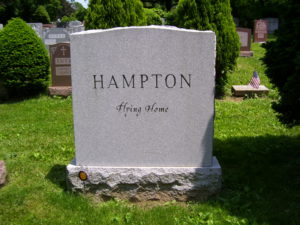


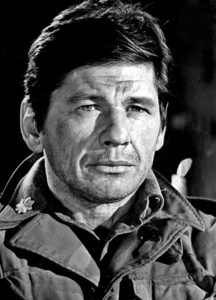
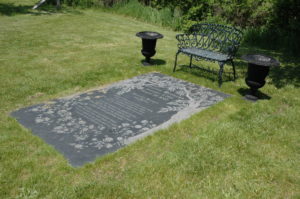
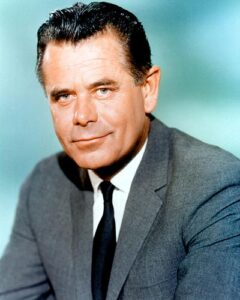

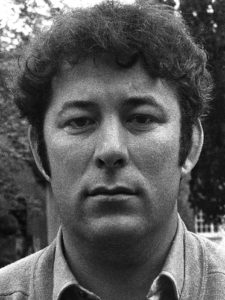
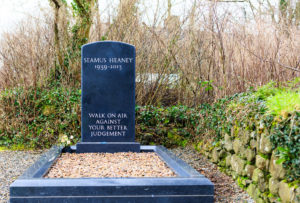
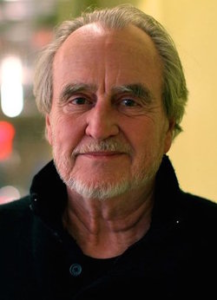 On this day in 2015
On this day in 2015 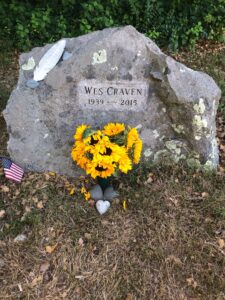
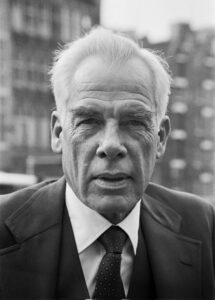
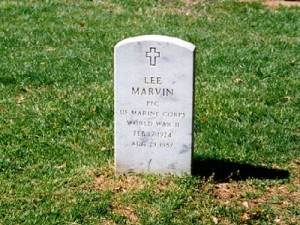

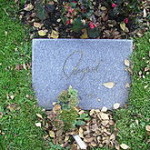
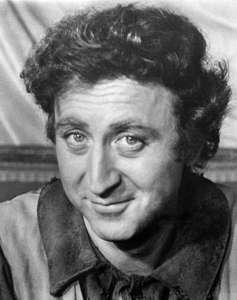
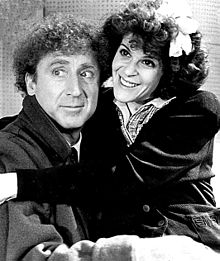
 On this day in 1859 critic, essayist, friend of Keats and Shelley, poet (“Jenny kiss’d Me”, “Abou Ben Adhem”, “A Night-Rain in Summer”), Leigh Hunt died in Putney in London, aged 74. Born James Henry Leigh Hunt on 19 October 1784, in Southgate, London.
On this day in 1859 critic, essayist, friend of Keats and Shelley, poet (“Jenny kiss’d Me”, “Abou Ben Adhem”, “A Night-Rain in Summer”), Leigh Hunt died in Putney in London, aged 74. Born James Henry Leigh Hunt on 19 October 1784, in Southgate, London.








 The Final Footprint – Huston is interred next to his mother in the Hollywood Forever Cemetery in Hollywood. Other notable Final Footprints at Hollywood Forever include; Mel Blanc
The Final Footprint – Huston is interred next to his mother in the Hollywood Forever Cemetery in Hollywood. Other notable Final Footprints at Hollywood Forever include; Mel Blanc
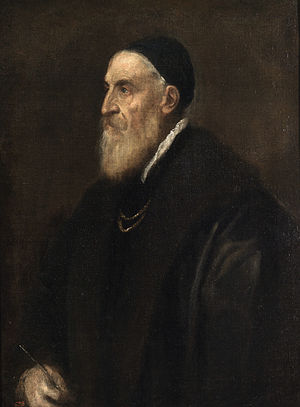
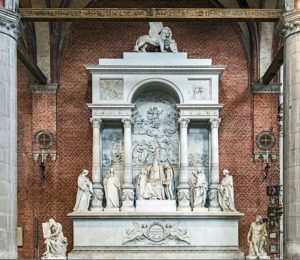







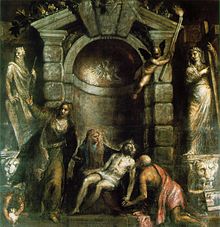

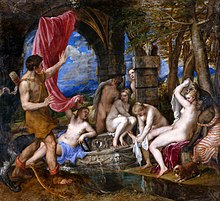

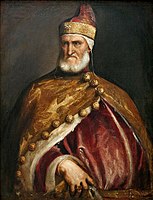
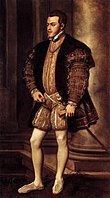



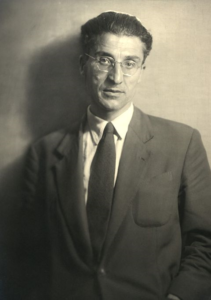
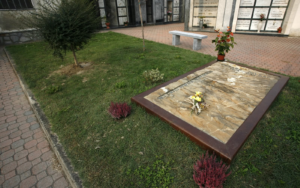

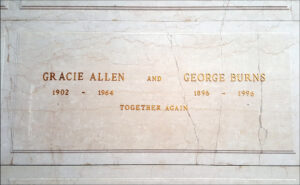
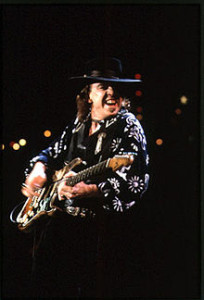
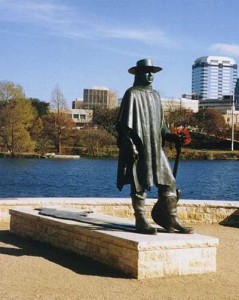
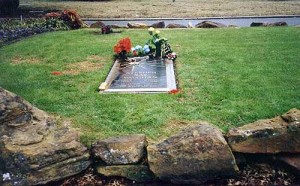
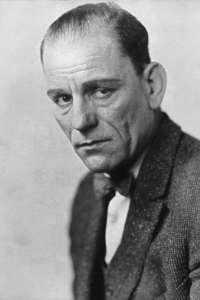

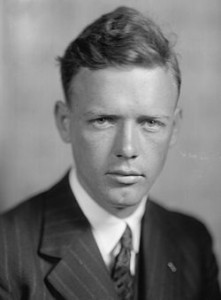
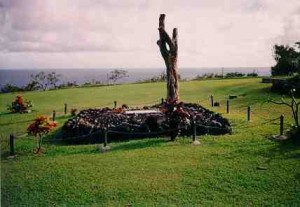
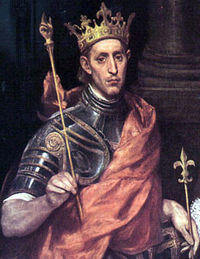



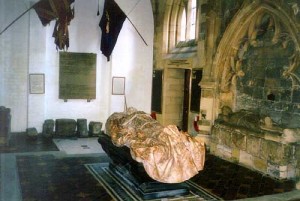
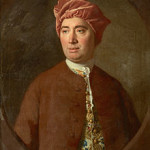
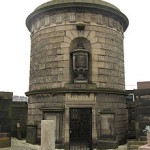
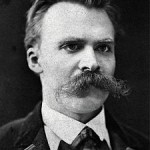
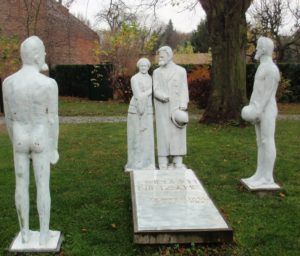

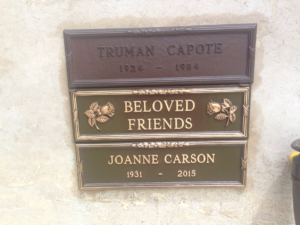
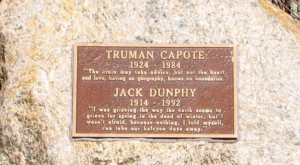

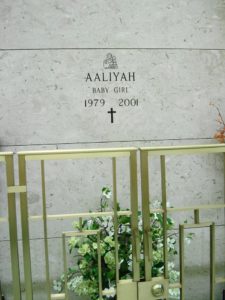
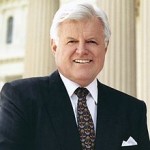 And on this day in 2009, younger brother of JFK and RFK, United States Senator from Massachusetts and a member of the Democratic Party, Edward Kennedy died of brain cancer at his home in Hyannis Port, Massachusetts at the age of 77, two weeks after the death of his sister, Eunice Kennedy Shriver. Born Edward Moore Kennedy on 22 February 1932 in Boston. He was the second most senior member of the Senate when he died and was the fourth-longest-serving senator in United States history, having served there for almost 47 years. As the most prominent living member of the Kennedy family for many years, he was also the last surviving son of Joseph P. Kennedy, Sr. and the father of Congressman Patrick J. Kennedy. Kennedy entered the Senate in a November 1962 special election to fill the seat once held by his brother John. He was elected to a full six-year term in 1964 and was reelected seven more times before his death. The Chappaquiddick incident on July 18, 1969, resulted in the death of his automobile passenger Mary Jo Kopechne. Kennedy pleaded guilty to a charge of leaving the scene of an accident and the incident significantly damaged his chances of ever becoming President of the United States. His one attempt, in the 1980 presidential election, resulted in a Democratic primary campaign loss to incumbent President Jimmy Carter. Kennedy was known for his charisma and oratorical skills. His 1968 eulogy for his brother Robert and his 1980 rallying cry for modern American liberalism were among his best-known speeches. He became recognized as “The Lion of the Senate” through his long tenure and influence. More than 300 bills that Kennedy and his staff authored were enacted into law. Unabashedly liberal, Kennedy championed an interventionist government emphasizing economic and social justice, but was also known for working with Republicans to find compromises between senators with disparate views. Kennedy played a major role in passing many laws, including laws addressing immigration, cancer research, health insurance, apartheid, disability discrimination, AIDS care, civil rights, mental health benefits, children’s health insurance, education and volunteering. During the 2000s, he led several unsuccessful immigration reform efforts. Over the course of his Senate career and continuing into the Obama administration, Kennedy continued his efforts to enact universal health care, which he called the “cause of my life.” Kennedy married twice: Virginia Joan Bennett (1958 – 1982 divorce) and Victoria Anne Reggie (1992 – 2009 his death).
And on this day in 2009, younger brother of JFK and RFK, United States Senator from Massachusetts and a member of the Democratic Party, Edward Kennedy died of brain cancer at his home in Hyannis Port, Massachusetts at the age of 77, two weeks after the death of his sister, Eunice Kennedy Shriver. Born Edward Moore Kennedy on 22 February 1932 in Boston. He was the second most senior member of the Senate when he died and was the fourth-longest-serving senator in United States history, having served there for almost 47 years. As the most prominent living member of the Kennedy family for many years, he was also the last surviving son of Joseph P. Kennedy, Sr. and the father of Congressman Patrick J. Kennedy. Kennedy entered the Senate in a November 1962 special election to fill the seat once held by his brother John. He was elected to a full six-year term in 1964 and was reelected seven more times before his death. The Chappaquiddick incident on July 18, 1969, resulted in the death of his automobile passenger Mary Jo Kopechne. Kennedy pleaded guilty to a charge of leaving the scene of an accident and the incident significantly damaged his chances of ever becoming President of the United States. His one attempt, in the 1980 presidential election, resulted in a Democratic primary campaign loss to incumbent President Jimmy Carter. Kennedy was known for his charisma and oratorical skills. His 1968 eulogy for his brother Robert and his 1980 rallying cry for modern American liberalism were among his best-known speeches. He became recognized as “The Lion of the Senate” through his long tenure and influence. More than 300 bills that Kennedy and his staff authored were enacted into law. Unabashedly liberal, Kennedy championed an interventionist government emphasizing economic and social justice, but was also known for working with Republicans to find compromises between senators with disparate views. Kennedy played a major role in passing many laws, including laws addressing immigration, cancer research, health insurance, apartheid, disability discrimination, AIDS care, civil rights, mental health benefits, children’s health insurance, education and volunteering. During the 2000s, he led several unsuccessful immigration reform efforts. Over the course of his Senate career and continuing into the Obama administration, Kennedy continued his efforts to enact universal health care, which he called the “cause of my life.” Kennedy married twice: Virginia Joan Bennett (1958 – 1982 divorce) and Victoria Anne Reggie (1992 – 2009 his death).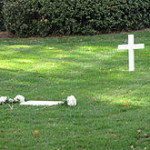 The Final Footprint – Kennedy’s body traveled from the Kennedy Compound in Hyannis Port to the John F. Kennedy Library in Boston where it lay in repose and where over 50,000 members of the public filed by to pay their respects. On Saturday, 29 August, a procession traveled from the library to the Our Lady of Perpetual Help Basilica in Boston, for a funeral Mass. Present at the funeral service were President Obama and former Presidents Jimmy Carter, Bill Clinton and George W. Bush, Tony Bennett, Placido Domingo, Jack Nicholson, Yo-Yo Ma, Lauren Bacall and Bill Russell. Kennedy’s body was returned to Washington, D.C. for burial at Arlington National Cemetery near the graves of his brothers. Kennedy’s grave marker is identical to his brother Robert’s: a white oak cross and a marble white foot marker bearing his full name, year of birth and death. Other notable Final Footprints at Arlington include; the Space Shuttle Columbia, the Space Shuttle Challenger, Medgar Evers, John F. Kennedy, Jacqueline Bouvier Kennedy Onassis, Robert F. Kennedy, Lee Marvin, Audie Murphy, and Malcolm Kilduff, Jr.
The Final Footprint – Kennedy’s body traveled from the Kennedy Compound in Hyannis Port to the John F. Kennedy Library in Boston where it lay in repose and where over 50,000 members of the public filed by to pay their respects. On Saturday, 29 August, a procession traveled from the library to the Our Lady of Perpetual Help Basilica in Boston, for a funeral Mass. Present at the funeral service were President Obama and former Presidents Jimmy Carter, Bill Clinton and George W. Bush, Tony Bennett, Placido Domingo, Jack Nicholson, Yo-Yo Ma, Lauren Bacall and Bill Russell. Kennedy’s body was returned to Washington, D.C. for burial at Arlington National Cemetery near the graves of his brothers. Kennedy’s grave marker is identical to his brother Robert’s: a white oak cross and a marble white foot marker bearing his full name, year of birth and death. Other notable Final Footprints at Arlington include; the Space Shuttle Columbia, the Space Shuttle Challenger, Medgar Evers, John F. Kennedy, Jacqueline Bouvier Kennedy Onassis, Robert F. Kennedy, Lee Marvin, Audie Murphy, and Malcolm Kilduff, Jr.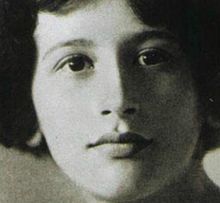
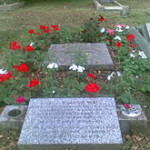 The Final Footprint – Weil is interred in the Catholic Section of the Bybrook Cemetery Ashford Kent, England Plot.
The Final Footprint – Weil is interred in the Catholic Section of the Bybrook Cemetery Ashford Kent, England Plot.
